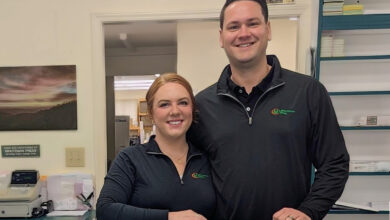There are a few reasons why ink may be doing this. Your mesh count could be too low, your ink could be too thin, or maybe you are doing too many print strokes. The garment could also be really low weight or thin. Additionally, perhaps you are applying a lot of pressure because your ink is too thick.
It’s not always just one reason, and sometimes, it’s a mix of these reasons. Here are a few good rules to follow to make sure you don’t push ink through your shirt when you don’t want to:
- Determine what kind of fabric you are printing on. Lightweight, ringspun, or promotional-grade garments allow ink to pass through the surface fairly easily. Pick the proper mesh count for the design, create a good flood, use a sharp squeegee, and don’t use more squeegee pressure than is needed to get the ink to clear the screen.
- Print through the highest mesh count you can that will still allow you to lay down enough ink for a clean print. You don’t always need to print through a 110 or 156 mesh for colors. Most of the time, you will get a better print with a higher mesh count like 180 or 200. Remember to flood your image before your print stroke, use a sharp squeegee blade, and use just enough pressure to get the ink to clear the screen.
- Unless you are going for a specific look, don’t thin your ink much, if at all. If your ink is “too thick,” stir it up and get it warm. Ink changes it’s rheology as it warms up. Once the ink is at around 80 degrees F, it starts to really flow or get creamy. It’s at this temperature that you can start printing easily without adding any thinner to your inks.
- You might be making too many passes with your squeegee. This typically happens because of a combination of the above three situations. Warm your ink up, pick the right mesh, flood your image, use a sharp squeegee blade, and use just enough pressure to get the ink to clear the screen.
- Back off your squeegee pressure. Unless there is an issue with blockage in your screen mesh (at this point change your screen and check your reclaim and exposure processes), again follow the above suggestions and warm your ink up, get a nice clean flood, use a sharp squeegee blade, and use just enough pressure to get the ink to clear the screen.
Notice a trend? The primary fix is making sure your inks are at “production temperatures” which is typically around 80 degrees F and then using the correct mesh for the fabric you are printing on. Use a nice sharp squeegee and flood your image before you pull the squeegee. You should start to see a huge difference.




